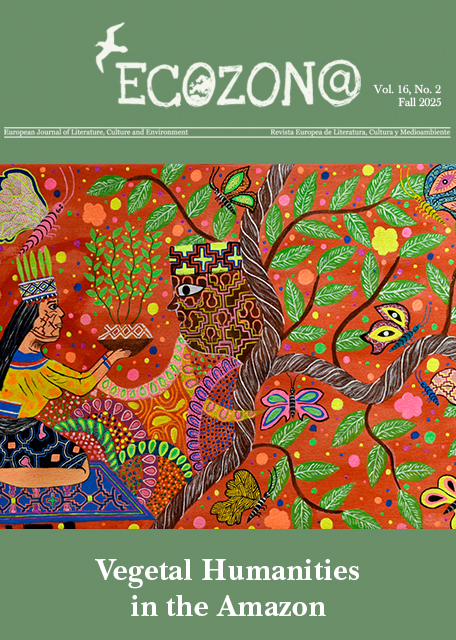Greening Black Metal: The EcoGothic Aesthethics of Botanist’s Lyrics
DOI:
https://doi.org/10.37536/ECOZONA.2022.13.1.4515Parole chiave:
Botanist, Ecogothic, Aesthethics, Black Metal, Material SpiritualityAbstract
Environmentalist Black Metal has been a liminal subject of academic ecocriticism during the last decade, but it has rarely been addressed from the perspective of ecoGothic studies. Environmental discourses in Black Metal have taken diverse ideological forms based on the time and place in which they were generated. In the United States, many bands have focused on exploring what Hunter Hunt-Hendrix calls “aesthethics,” an affirmative and nihilist sense of transcendentalism carried out through a certain sense of aesthetics, ascetics (spirituality), and ethics. US bands like Botanist have usually been analyzed through the lens of Deep Ecology, that is, as projects depicting a sacralized Nature and a sense of nihilist self-hating humanism. This view, thus, implies an essentialist understandings of Nature/humanity dynamics on their behalf. Botanist’s lyrics are characterized by the creation of a demonological/angelical Nature in sempiternal conflict with humanity and its environment-destroying activities. Observing this narrative through an ecoGothic perspective, however, uncovers a different understanding of the romanticized portrayals of Nature depicted by the band, ultimately highlighting humanity and “humanness” as a vital part of its aesthethical construction. This article, therefore, explores the ways in which ecoGothic aesthetics, Val Plumwood’s notion of material spirituality and, Donna Haraway’s sense of “chthulucenic” ethics connect with each other in Botanist’s grim lyricism. The article highlights the importance of Botanist’s representation of plant architectures, “Mother Nature’s” spirituality, and the environmental ethics involved in the performance of “The Botanist,” the protagonist of the band’s narrative. This brings to light how the band’s depiction of Nature not only drives audiences to reflect on contemporary environmental anxieties, but also to look for onto-ethical alternatives to addressing human/non-human relationships.
Downloads
##submission.downloads##
Pubblicato
Fascicolo
Sezione
Licenza
Authors who publish with this journal agree to the following terms:
a) Authors retain copyright and grant the journal right of first publication with the work simultaneously licensed under a Creative Commons Attribution License that allows others to share the work with an acknowledgement of the work's authorship and initial publication in this journal (CC BY-NC for articles and CC BY-NC-ND for creative work, unless author requests otherwise.
b) Authors are able to enter into separate, additional contractual arrangements for the non-exclusive distribution of the journal's published version of the work (e.g., post it to an institutional repository or publish it in a book), with an acknowledgement of its initial publication in this journal.
c) Authors are permitted and encouraged to post their work online (e.g., in institutional repositories or on their website) prior to and during the submission process, as it can lead to productive exchanges, as well as earlier and greater citation of published work (See The Effect of Open Access).










